KO versus HiLo Strategy Comparison
It has taken some time for old-timers like myself to understand just
how powerful the Knock-Out Blackjack Strategy is in comparison to True
Counted Blackjack strategies. Since Peter Griffin's time, we have always
believed that unbalanced card counting strategies cannot match the power
of True Counted card counting. The common comparison is between the HiLo
and KO strategies. It turns out that KO and Hilo when compared using SCORE
methodology are essentially equal.
Now it has been pointed out that the SCORE card counting strategy comparison
methodology requires optimal bet ramps and that optimal bet ramps vary
by penetration. That is, you should have a different betting schedule
depending on the total penetration in a game. In theory, this should be
more of a problem with unbalanced strategies as they are known to be weaker
at very low and high penetrations. Let us look at this effect in KO. In
the below chart, the SCOREs are displayed for every penetration from 26
cards cutoff to 132 cards cutoff. Two sets of SCOREs are displayed: KO
SCORE (optimal bet ramp varying by penetration) versus KO with a fixed
betting ramp. The green line provides the SCOREs for KO (S17, DAS, 6D,
1-15.) For the red line, I calculated the optimal betting ramp for 4.75/6
penetration and then used that fixed betting ramp for all penetrations.
As you can see, at 4.75/6 (65 cards) the two lines kiss. The farther you
get from that point, the farther the two lines diverge as the betting
ramp is farther from optimal.
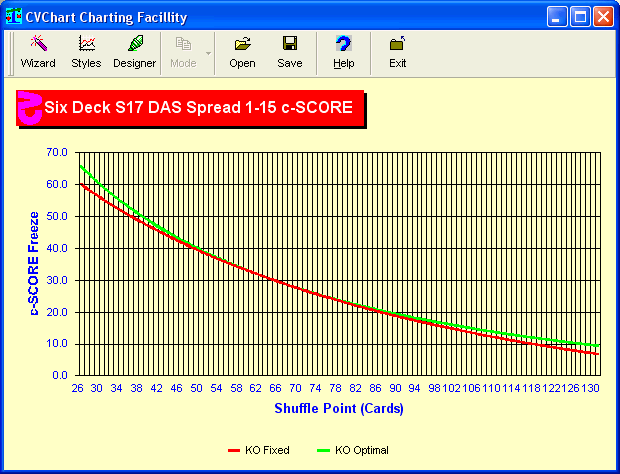
This means that if you select one betting ramp for all penetrations;
you will not be betting optimally at other penetrations and this will
hurt your performance.
For the second chart, I used exactly the same process for HiLo. Here
you see the same effect; but it is less dramatic than in the KO chart.
This is because a balanced Blackjack strategy, by its nature, is a bit
better at maintaining near optimal performance with a fixed betting schedule.
But, it is not perfect.
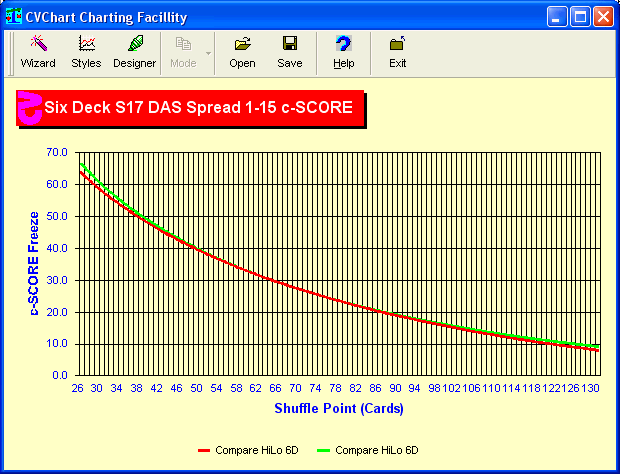
OK, Let’s put the data together. In the third chart, I plotted KO fixed
spread with HiLo fixed spread. This chart shows KO and HiLo performing
about the same at the typical penetrations (KO wins very slightly) and
HiLo beating KO at high and low penetrations. Of course card counters
shouldn’t play very poor penetrations and unfortunately no one will let
you play deep penetrations.
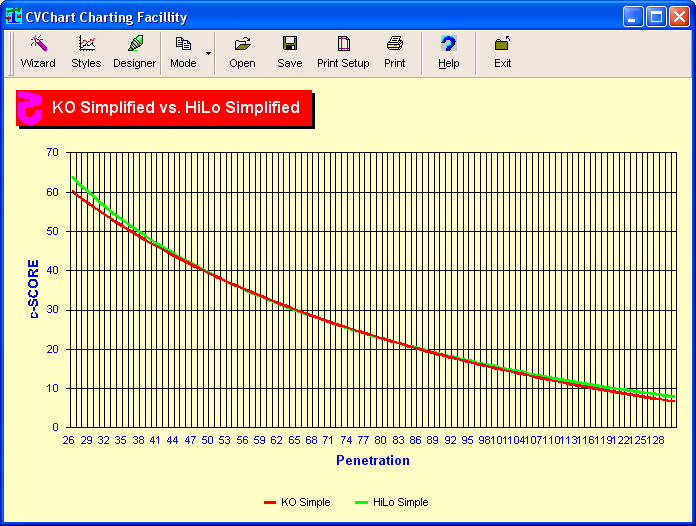
Now I picked 4.75/6 as my center point. This provides KO with 99% to
100.7% of HiLo performance from 44 to 90 cards cut off. You could pick
a different center point if you tend to play different penetrations. My
point is that you do not need to memorize 100 different betting ramps.
One or two is fine. If you want the best possible performance, generate
a table of ideal betting ramps for every penetration and carry it with
you.
Link to the Raw Data behind this chart – Chart 3
Now you could select two center points using two betting ramps to greatly
broaden the range of penetrations at which KO and HiLo compare favorably.
So let's take the next step. I created one betting ramp optimized at 97
card penetration and another at 58 cards. The idea is to use one for 4.5
deck penetration and above and one for below 4.5/6. To be absolutely fair,
I did this for both KO and HiLo. Now, I calculated the c-SCOREs for every
penetration for KO and HiLo using this scheme and plotted them below:
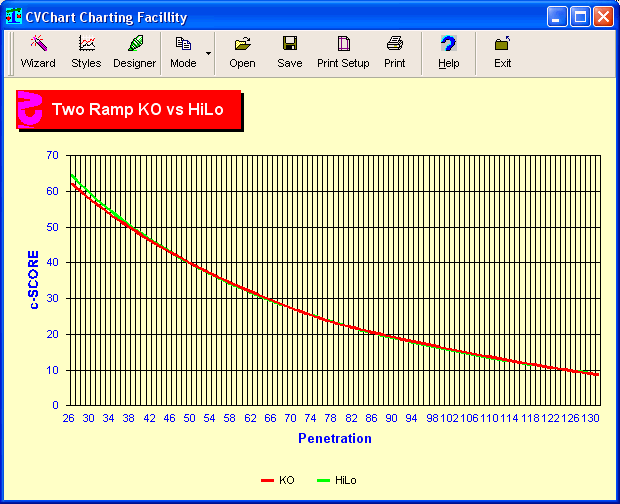
Now to more clearly see the difference in performance between KO and HiLo,
I created a percentage chart. Whenever the line is above 100%, KO Blackjack
has the advantage and below, HiLo Blackjack has the advantage.
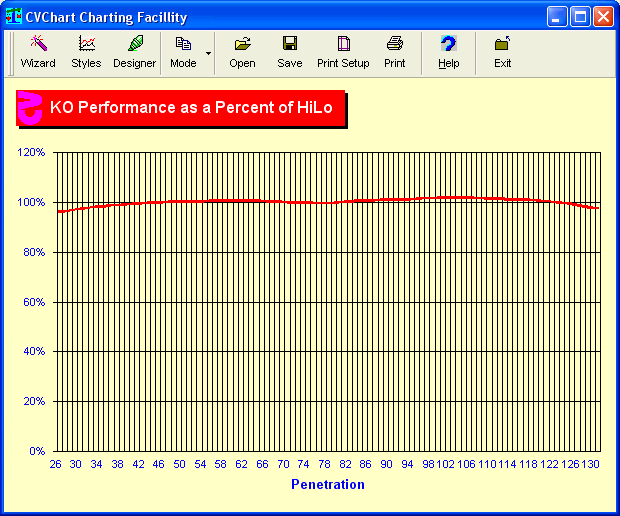
In summary, from a penetration of 41 cards to 124 cards (3.63/6 to 5.21/6)
KO performance varies from 99.5% to 102% of HiLo. I believe this is all
reasonable penetrations using one set of indexes and two betting ramps
for both KO and HiLo at all penetrations. The conclusion is that the KO
and HiLo card counting strategies are essentially equal in performance
without the requirement for memorization of numerous betting ramps.
Link to Raw Data for – Both Charts
| 
